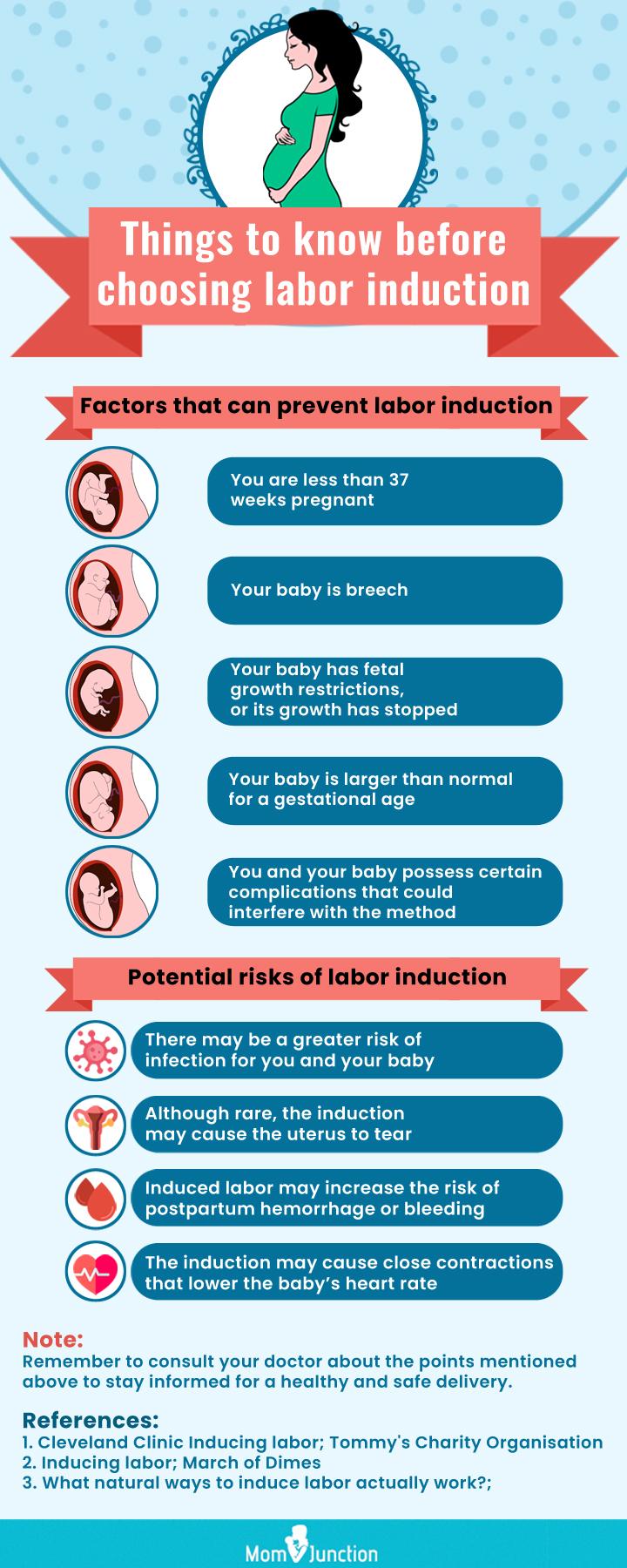Bringing a new life into the world is a remarkable and transformative journey. While childbirth is a natural process, there are occasions when medical intervention becomes necessary to ensure the safety of both the mother and the baby.
In this article, we will explore the dos and don’ts before undergoing labor induction and delve into the crucial aspects of preparing for this significant event.
To begin, let’s first define labor induction, understand the circumstances under which it may be necessary, and emphasize the pivotal role of preparation in this process.
What Is Labor Induction?
Labor induction is a medical procedure used to initiate or accelerate the process of childbirth when it does not begin naturally or needs to progress more rapidly for the well-being of the mother or the baby.
This procedure typically involves the use of medications, mechanical methods, or a combination of both to stimulate uterine contractions, ultimately leading to the onset of labor and the delivery of the baby.
Labor induction may be recommended for various reasons, such as post-term pregnancy, medical complications, fetal distress, or other situations where it is deemed safer for the mother and the baby to give birth sooner than waiting for labor to commence naturally.
Circumstances Under Which Labor Induction May Be Necessary

It’s important to note that the decision to induce labor is made on a case-by-case basis, carefully considering the specific circumstances and weighing the potential benefits and risks. Pregnant individuals should discuss the need for labor induction with their healthcare provider and be informed about the reasons for the procedure before giving their consent.
Labor induction may be necessary in various circumstances when it is deemed safer for the mother and the baby to initiate or accelerate labor artificially. Some of the common medical indications for labor induction include:
- Post-Term Pregnancy: If the pregnancy lasts beyond 42 weeks (post-term or overdue), there is an increased risk of stillbirth or other complications, making induction necessary.
- Preeclampsia: Preeclampsia is a condition characterized by high blood pressure and organ damage, typically occurring in the second half of pregnancy. Induction may be necessary to prevent further complications.
- Gestational Diabetes: If a pregnant woman has gestational diabetes and her blood sugar levels are not well-controlled, labor may be induced to minimize risks to the baby.
- Fetal Growth Restriction: When the baby is not growing adequately in the womb (intrauterine growth restriction or IUGR), induction may be required to ensure the baby’s health.
- Placental Abruption: If the placenta starts to detach from the uterus before labor begins (placental abruption), it can be an emergency situation requiring immediate induction.
- Oligohydramnios: Low levels of amniotic fluid (oligohydramnios) can indicate a potential problem with the baby’s development or a risk of cord compression. Induction may be necessary in such cases.
- Preterm Rupture of Membranes: When the amniotic sac ruptures before 37 weeks of gestation (preterm rupture of membranes), labor induction may be necessary to prevent infection and other complications.
- Chorioamnionitis: Infection of the fetal membranes and amniotic fluid (chorioamnionitis) can necessitate induction to prevent the spread of infection to the baby.
- Maternal Health Concerns: If the mother has certain health conditions that make continuing the pregnancy risky, such as severe heart disease or kidney problems, labor induction may be recommended.
- Fetal Distress: Continuous monitoring may reveal signs of fetal distress, such as an abnormal heart rate pattern. In such cases, prompt induction may be needed to ensure the baby’s well-being.
- Ruptured Membranes Without Contractions: If the amniotic sac ruptures (water breaks), but contractions do not start on their own within a reasonable timeframe, induction may be necessary to prevent infection.
The Dos Before Labor Induction
Before undergoing labor induction, there are several crucial steps to ensure a smoother and safer process.
First and foremost, consult extensively with your healthcare provider to understand the reasons for induction and the recommended method.
Be mentally and emotionally prepared by managing anxiety, setting realistic expectations, and creating a birth plan. Prioritize your physical well-being by staying hydrated, getting adequate rest, and engaging in gentle exercises.
Don’t forget to assemble your support team, which may include a birth partner or doula. These proactive steps can help you navigate the induction process with greater confidence and comfort.
Following Is The List Of Do’s Before Induction For Quick Overview
- Get a good night’s sleep. This will help you have the energy you need for labor.
- Eat a light breakfast. Avoid heavy or greasy foods, as they can upset your stomach.
- Drink plenty of fluids. Staying hydrated is important during labor.
- Empty your bladder and bowels. This will make you more comfortable during labor and delivery.
- Bring your birth plan and any other important documents to the hospital.
- Pack a bag for yourself and your partner. Be sure to include comfortable clothes, snacks, and toiletries.
- Wear loose, comfortable clothing.
- Bring a support person. Having someone with you during labor can provide emotional and physical support.
- Ask questions. If you have any questions or concerns about labor induction, be sure to ask your doctor or midwife.
- Stay active. Walking, bouncing on a ball, and changing positions can help to stimulate contractions.
- Drink plenty of fluids. Dehydration can slow down labor.
- Use relaxation techniques. Deep breathing and meditation can help you to manage pain and cope with stress.
- Listen to your body. Take breaks when you need them, and don’t be afraid to ask for help.
The Don’ts Before Labor Induction
While preparing for labor induction, it’s just as crucial to be aware of what you should avoid. To ensure a safe and effective induction process, certain actions and behaviors should be steered clear of.
In this section, we will explore the “don’ts” before labor induction, highlighting practices and choices that are best avoided to promote a successful and healthy birthing experience for both the mother and the baby.
Following Is The List Some Don’ts Before Labor Induction
- Don’t eat a heavy meal. You may not be able to eat once contractions start, so it’s best to have a light meal beforehand.
- Don’t drink caffeine or alcohol. Caffeine and alcohol can interfere with labor and make it more difficult.
- Don’t take any herbal supplements or medications without consulting your doctor. Some supplements and medications can interact with the drugs used to induce labor.
- Don’t smoke. Smoking can reduce the oxygen supply to your baby and make labor more difficult.
- Don’t douche. Douching can increase the risk of infection.
- Don’t have sex. Sex can release oxytocin, which can start labor contractions. If you’re scheduled for an induction, it’s best to avoid sex until after the baby is born.
Risks Associated with Labor Induction

Increased Likelihood of Medical Interventions: Labor induction often involves the use of medications (like oxytocin) to stimulate contractions. While this can start labor, it may also lead to more intense and frequent contractions, which can increase the need for medical interventions such as continuous fetal monitoring or pain relief methods like epidurals.
Higher Chance of Cesarean Section: Induced labor can sometimes lead to a higher risk of cesarean section (C-section), especially if the cervix is not yet favorable for labor or if the induction process doesn’t progress as expected. This is because the uterus may not respond to the medications as effectively as it would to natural hormonal cues.
Benefits of Labor Induction
Avoiding Complications: In some cases, the risks associated with waiting for labor to begin naturally can be greater than those associated with induction. For example, if a pregnancy goes past 42 weeks (post-term), the risk of stillbirth or other complications can increase. Inducing labor in such cases can help avoid these potential problems.
Managing Medical Conditions: Labor induction may be necessary when a pregnant person has certain medical conditions like preeclampsia, gestational diabetes, or hypertension. Induction can help manage these conditions and reduce the risk of related complications for both the mother and the baby.
Controlled Timing: In some situations, labor induction allows for better control over the timing of the birth. This can be important for medical planning, ensuring the presence of necessary healthcare providers, or accommodating personal or logistical considerations.
Final Verdicts
By following the dos outlined in this guide, expectant mothers can proactively address their physical and emotional well-being, gather their support team, and engage in informed discussions with healthcare providers.
Equally important are the don’ts, which caution against risky practices and stressors that could potentially complicate the induction process. Remember that the decision to induce labor is a collaborative one, made in consultation with medical professionals who consider the unique circumstances of each pregnancy.
By adhering to these dos and don’ts, expectant parents can navigate labor induction with greater confidence and be better prepared for this significant chapter in their journey toward parenthood.
Relevant: Lead Baby to Sleep too Quick


